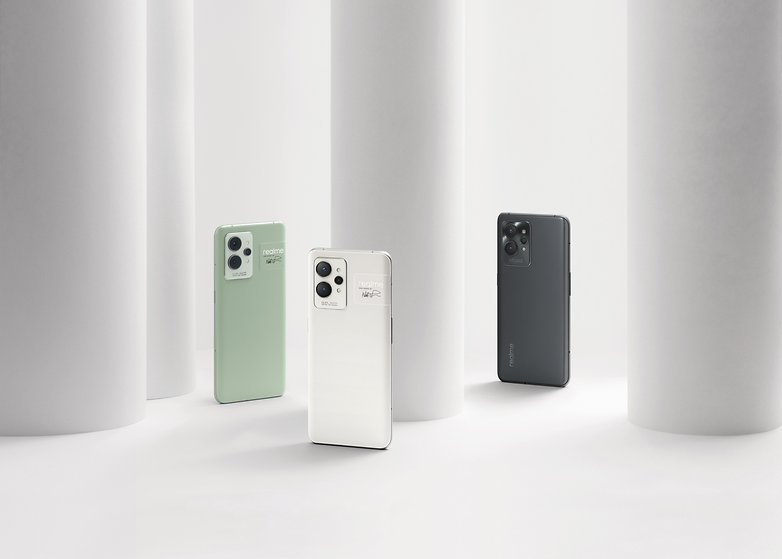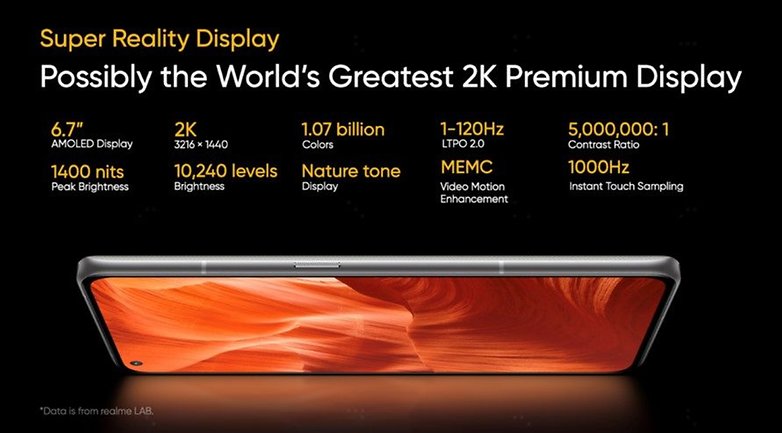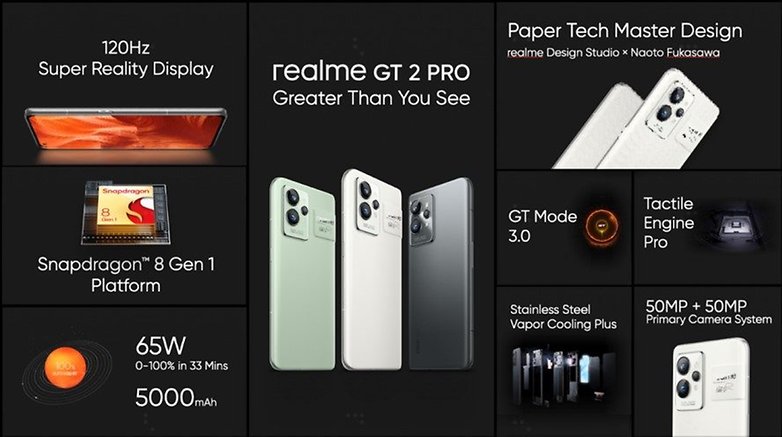
[ad_1]
The MWC 2022 in Barcelona has just started this Monday, February 28, and Realme opened the festivities with the official launch of the Realme GT 2 and Realme GT 2 Pro. The Realme GT 2 Pro is the first truly high-end smartphone from the manufacturer that is supposed to mark a serious change in strategy.
The Snapdragon 8 Gen 1-powered Realme GT 2 Pro will start at €749.99 in Europe (around $840), while the Snapdragon 888-powered Realme GT 2 will start at €549.99 (approximately $615). Both smartphones will be available for sale on March 11 in Europe, with no plans for sale in North America.
I’m going to go over the basic Realme GT 2 very quickly. Just note that it has more or less the same specifications as the Realme GT 2 Pro, namely the paper effect design, the 5000 mAh battery, Realme UI 3.0. The differences are that it has a 120 Hz AMOLED E4 display (not 2K AMOLED), and the Snapdragon 888 5G SoC (not Snapdragon 8 Gen1).
But it’s mostly the Pro model that I’m going to talk about here. With the GT 2 Pro, Realme is not kidding around anymore and intends to offer a high-end Android smartphone without the slightest concessions, on paper at least. This is clearly a more premium strategy than for the first Realme GT, which was released last year and reminds us a little of a certain OnePlus.
A “paper” design but not cardboard
The Realme GT 2 Pro comes in three colors: Paper White, Paper Green, and Titanium Blue. Why “Paper”? Because the manufacturer has collaborated with industrial designer Naoto Fukasawa to develop a bio-sourced polymer coating “based on the concept of paper art.”Specifically, after 12 months of research and 63 prototypes, Realme managed to get a shell made of a sustainable composite material certified ISCC+ (which ensures material traceability, basically, the IP index of sustainability).

This LNP ELCRIN material from SABIC is derived from waste or biomass residues. It mimics paper, saving weight, but also reduces the carbon footprint of the Realme GT 2 Pro by two kg of CO2 per kg of bio-based copolymer.
But the Realme GT 2 Pro is not just about sustainability in terms of design. The manufacturer also wants to ensure better durability of its components and, consequently, the smartphone’s performance. That’s why the Realme GT 2 Pro includes a larger heat dissipation area allowing up to 3 degrees of cooling to maximize the performance of its Snapdragon 8 Gen1 SoC. The cooling area is built with an all-new 9-layer cooling structure with a stainless steel vapor chamber (VC) area.
Knowing the propensity of high-end Snapdragon chips to overheat, this temperature control system is clearly not superfluous.
A Super Reality LTPO 2.0, 120 Hz, 1400 nits, and 10-bit compatible screen
The 6.7-inch screen of the Realme GT 2 Pro is one of the most promising elements of this new flagship. We are on a 2K AMOLED flat screen based on LTPO 2.0 technology that is supposed to allow the Realme GT 2 Pro to offer a more accurate variable refresh rate, between 1 and 120 Hz. Realme also debuts a GT 3.0 mode to boost the touch sampling rate to 1000 Hz for gaming, a pretty crazy number.
The Realme GT 2 Pro’s display also supports 10-bit color depth and offers a maximum brightness of 1400 nits (peak). We’ve already been able to talk about the merits of 10-bit color in our test of the Oppo Find X3 Pro, among others. But note that the color depth level can produce 1024 shades of red, green and blue, an impressive total of 1.07 billion colors.
The screen of the Realme GT 2 Pro is also protected by a layer of Corning Gorilla Glass Victus. In any case, with the 2K definition that is 3216 x 1440 pixels and a density of 525 dpi, the Realme GT 2 Pro’s screen specs have all the makings of a premium Android flagship.

A triple camera module with the first 150° ultra-wide angle
The Realme GT 2 Pro packs a triple camera module on the back with a 50 MP Sony IMX766 wide-angle main lens, a 50 MP Samsung JN1 ultra-wide-angle lens with a 150° field of view and a 40x microlens.
The 50 MP main camera lens features Sony’s flagship IMX766 sensor, like on the OnePlus 10 Pro, with omnidirectional PDAF and OIS on all pixels. The IMX766 features optical image stabilization for stills and electronic image stabilization for videos.
In addition, the Realme GT 2 Pro incorporates, according to its manufacturer, the world’s first ultra-wide-angle lens with a field of view of 150 degrees and Realme also offers a “fish-eye” mode to take advantage of wide FOV, significantly wider than the average of 120 ° offered by high-end smartphones in general.
Finally, the x40 microlens camera allows you to take microscopic pictures, something my colleague Ben loved on the Oppo Find X3 Pro and that the Oppo Find X5 Pro has, to his chagrin, abandoned. Realme promises that this 2.0 version offers a 4x depth of field, which guarantees better image focus, much sharper visuals and even easier focusing.

No 200W recharging but up to 4 years of upgrades
This was one of the most anticipated features of this Realme GT 2 Pro after rumors of 200W charging technology came out shortly before MWC 2022.
As I write this, ahead of the official launch and with embargoed information, all I can tell you is that the Realme GT 2 Pro has a 5000mAh battery and accepts SuperDart wired charging at 65 watts.
I don’t know yet if the manufacturer is reserving its 200W charging for the base Realme GT 2 or if this technology will simply be unveiled without being commercialized yet during MWC 2022 or if the rumors about its announcement were totally unfounded. Realme will surely drop the ball live during its conference, I will update this article accordingly.
On the other hand, the manufacturer has been more generous with information about the Realme GT 2 Pro software. The smartphone will run under Realme UI 3.0 based on Android 12, like the Realme 9 Pro+ I just tested. Realme also guarantees three major versions of Android as well as four years of security updates.
This is a much more extensive update policy than what the manufacturer has offered so far, and Realme seems to be following the path taken or rather opened by Samsung (which also remains the best policy in the Android ecosystem).
[ad_2]






